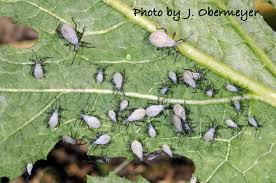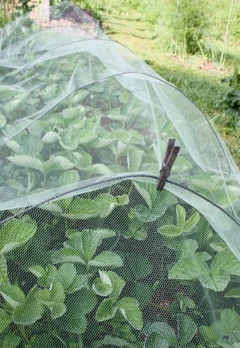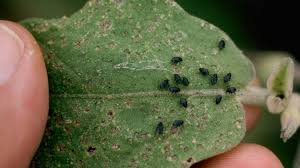Gardening can be an incredibly rewarding experience, but sometimes, your once-perfect garden starts showing signs of distress. Leaves may develop holes, spots, or missing chunks, often without any visible culprit. Fortunately, modern digital photography and magnifying tools can help us pinpoint the pests or diseases causing these issues. Here’s a breakdown of common causes for leaf damage in your vegetable garden and what you can do about it.
Slugs and Earwigs: Silent Nighttime Feeders
Slugs are notorious for leaving holes in leaves, especially in the early stages of the growing season. These pests are most active at night, feeding on leaves and creating smooth-edged holes. Larger slugs typically nibble at the edges of leaves, while smaller ones create irregular holes within the leaf itself. For example, chard leaves often show smooth, green-edged holes caused by slugs.
Earwigs, on the other hand, create ragged, irregular chomping patterns. They tend to hide under pots or in the crevices of raised beds during the day, coming out at night to feed on tender leaves, especially basil, peppers, artichokes, and milkweed.

What to Do: To manage these pests, consider using homemade traps like beer-filled containers to attract slugs or earwigs. Moving containers around can help disrupt infestations. Delay mulching if slugs and earwigs are present, as mulch provides them with daytime shelter.
Cucumber Family Foes: Bugs that Love Cucumbers and Squash
Despite their prickly, coarse leaves, cucumbers and squash are susceptible to pests like cucumber beetles, squash bugs, and squash vine borers. These pests damage the leaves and stems, weakening the plants.

What to Do: Protect your cucumber and squash crops with insect-excluding row covers, which can remain on until pollination is needed. Lightweight tulle (often used for wedding décor) works well for this purpose.

Tomato Troubles: Flea Beetles and Fungal Leaf Spots
Tomato plants, along with eggplants, peppers, and potatoes, often fall victim to flea beetles. These tiny insects create small, round pinprick holes in the leaves. While eggplants may need additional protection, tomatoes and peppers usually outgrow flea beetle damage. However, the bigger threat to tomatoes comes from fungal diseases like early blight. Early blight appears as dark, bullseye-shaped spots on the lower leaves. These spots gradually turn yellow and cause the leaf to wither.

What to Do: Promote good air circulation by spacing plants appropriately. If you notice spots on lower leaves, prune them back to at least 12 inches from the ground. This will help the plant dry more quickly after rain and reduce the spread of disease.

Frog-Eye Spots on Chard: Cercospora Fungi
Warm summer rains can lead to outbreaks of cercospora fungi, which cause distinctive “frog-eye” spots on leaves of chard, beets, carrots, celery, and other crops. These spots often have a blister-like appearance and may crack open. Infected carrot foliage can become weak and brown, although the carrots themselves can continue to grow.
What to Do: While you can’t control the rain, you can improve airflow by thinning and weeding around plants. Remove the oldest infected leaves to prevent the spread of the disease. Harvesting aggressively helps remove fungal spores and stimulates new growth.
Understanding the Garden Ecosystem
A garden is more than just a space for growing plants—it’s a dynamic ecosystem full of tiny life forms that impact your crops. By learning about common garden pests and diseases, you’ll not only protect your plants but also gain a deeper appreciation for the intricate relationships at play in your garden.
With the right knowledge and strategies, you can troubleshoot common leaf problems, ensuring your garden continues to thrive.
